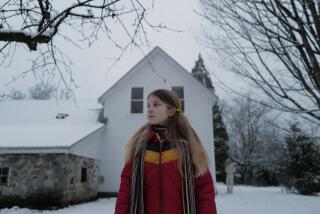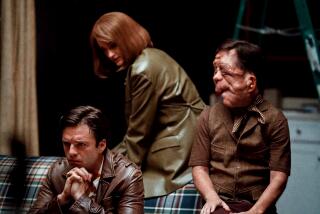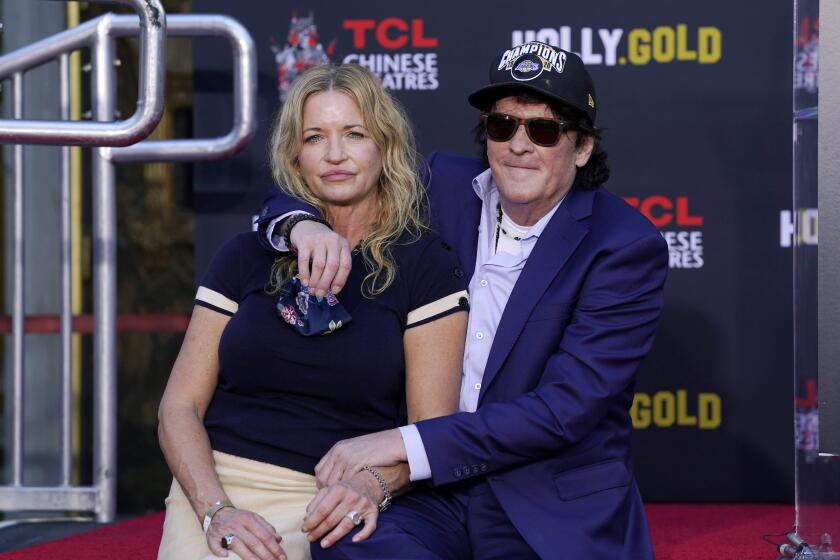Jane Austen’s life, the romanticized version
When writing about Jane Austen, it takes enormous restraint not to open with “It is a truth universally acknowledged,” the words with which she so famously began “Pride and Prejudice.” When making a biopic about Jane Austen, it takes enormous daring to take universally acknowledged truths about the great author and stand them on their heads in an effort to convey her spirit.
“Becoming Jane,” starring Anne Hathaway as the author and James McAvoy as her romantic interest Tom Lefroy, starts with the few known facts about Austen’s life, adds a bit of academic conjecture and weaves in some outright invention.
For Austen aficionados, the first question would be: Wait a minute, what romantic interest? They would likely know of a few sentences in two letters from Austen to her sister Cassandra and some speculation in books about the author. Austen met Lefroy when he visited Hampshire, England, during the holiday season of 1795. In one letter, she mentions dancing and sitting often with him, which was enough to set the countryside talking. It was also enough to set screenwriter Sarah Williams thinking about a potential film.
She pitched the idea to Ecosse Films (“Mrs. Brown”), and they developed it, studying several recent biographies that consider Lefroy significant in Austen’s life. “Becoming Jane Austen” by Jon Spence extrapolated on the nature of that relationship more than the others; Spence was hired as a consultant on the movie.
The filmmakers hewed closely to the facts about Austen’s family life and social standing, even about Lefroy’s obsession with the book “Tom Jones.” (He wore a white coat in imitation of that novel’s protagonist; the film turned it green for cinematic purposes.) Then the conjecture begins. “Jane’s learning about love in her real life and then writing about it was in our imagination,” said producer Robert Bernstein.
Even the most faithful biopic is going to contain imagined scenes. In this case, the story was rounded out with characters and events from Austen’s own novels, which had their basis in reality. “You can pretty clearly see who the people in ‘Pride and Prejudice’ were in her life,” said Kevin Hood, who rewrote the script (he and Williams share screenplay credit).
He pointed out that Austen wrote a first version of “Sense and Sensibility” before meeting Lefroy and rewrote it afterward. “This sense of an unreliable young man arriving in a village and winning someone’s heart and playing with it appears in all her books,” he noted. The sisters’ relationship in “Sense and Sensibility” also has echoes in the relationship between the Austen sisters onscreen. Her other novels figure in as well.
“I think in some ways people who are steeped in Austen almost get more out of it,” said director Julian Jarrold (“Kinky Boots”), “because they can see the connections and the games we’re playing with the characters in the novels and the situations that we portray.”
As if to test that theory, the filmmakers invited some of Austen’s most dedicated admirers -- members of the Jane Austen Society in England -- to a screening to see their response. A direct descendant of Lefroy attended. “That was a tough gig,” Hood said. Bernstein added, “She actually said that although none of it’s true, she did like the film.”
Members of the Jane Austen Society of North America, who also screened the film, agreed. “It’s fictional in the way that ‘Shakespeare in Love’ was fictional,” society President Marsha Huff said. “That movie didn’t diminish Shakespeare or ‘Romeo and Juliet,’ it enhanced them.” “Molière,” a more recent arrival, is a similarly imaginative homage to a great writer of whom little is known. To Huff, “the film is like a neon sign that Jane has arrived.”
She did notice discrepancies between reality and the film. “I do know just enough facts to be dangerous,” she joked. For instance, in the movie, Austen uses a metal-tipped pen; in real life, she used a quill. “It just brought me up short,” said Huff, who then provided her own explanation for the time-period inconsistency. “I think it was because they wanted to show her writing very fast. There were beautiful scenes where the lighting is gorgeous and her face is so intent, and you couldn’t use a quill and write fast. It was a perfectly good cinematic choice.”
On screen, Lefroy introduces an innocent Austen to “Tom Jones,” but as an avid reader, she likely would have read the popular novel long before then, said Huff and the society’s Southwest co-director Claire Bellanti. Even so, Bellanti appreciated the film’s use of that racy novel “as a way of introducing her to a world of passion when she clearly was an unmarried woman.”
Although Bellanti considered the film pure fantasy, she liked it -- especially that Austen wasn’t reduced to a simple romantic heroine. “It didn’t make the relationship between Jane Austen and Tom Lefroy the be-all and end-all of her life,” she said, adding that Austen knew of her skills as a writer and the film celebrates that. However, few others were aware of her skills in her lifetime. Late in the movie, a fan recognizes Austen the author. In actuality, she published her work anonymously.
A twist near the film’s end caused a round of gasps among society members at a screening -- and will not be revealed here. (It may not be “The Sixth Sense,” but cross Austen fans at your own peril.) The truth behind that twist is far more prosaic than its film version. “But so what? It’s beautiful,” said Huff.
She posted facts about Austen and Lefroy on the society site ( www.jasna.org), making it clear that it wasn’t intended to disparage the movie. “I’m looking forward to seeing it a second time,” she said, “so I can just let go and enjoy the romance.”
More to Read
Only good movies
Get the Indie Focus newsletter, Mark Olsen's weekly guide to the world of cinema.
You may occasionally receive promotional content from the Los Angeles Times.










